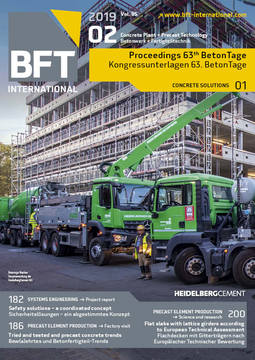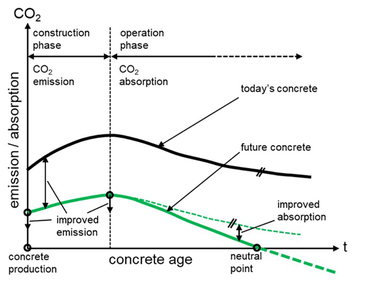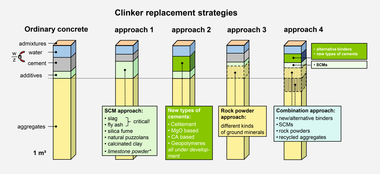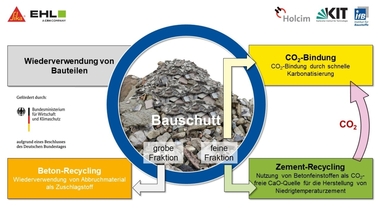Which materials can we use?
Resource efficiency and climate protection will continue to challenge the method of concrete construction. However, there is no silver bullet in sight. New approaches such as the carbon dioxide capture in the cement industry are worked on intensely. Well-proven concepts as reducing the clinker/cement factor have not been fully exploited yet. Innovative construction and production technologies for concrete components may make a contribution as well. What can actually be done?
In the foreseeable future, Portland cement clinker will remain the main constituent of cement. Alternatives in a satisfying technical quality are not in sight to cover the constantly growing demand for cement all over the world. All the more important becomes the question how clinker efficiency can be further improved and the clinker intensity and thus CO2 intensity, respectively, can be reduced even further. Clinker intensity is understood to mean here the use of clinker relating to one or two characteristics of mortar or concrete. This is the compressive strength in the simplest case.
The next edition of EN 197-1 will standardize, among others, cement with a minimum clinker content of 50 % as CEM II/C. Other main constituents can be limestone of up to 20 % and either blast-furnace slag, fly ash, or natural pozzolana of up to 30 %. Various research projects of VDZ investigated the properties of mortar and concrete using such cements. It was not an obstacle here to achieve the corresponding strengths in the concrete for a specific application. The same applies to Portland limestone clinker, for example, with limestone contents of up to 30 wt.-%. In this respect, these cements can be used at least for concrete of interior components for which the strength and deformation properties are of relevance besides the site-specific fresh concrete characteristics. A restriction of the use of cement for interior components only does not seem to be promising, in particular, in consideration of building practice. Whenever an application has to be evaluated in an exterior component, the durability must be considered besides the compressive strength. Specifically, these are the exposure classes XC3 and XC4/XF1, respectively, for standard exterior components in building construction. Investigations conducted by VDZ point out that an appropriate resistance to carbonation and frost resistance at mode-rate water saturation can be achieved purposefully if a maximum water/cement ratio w/c = 0.50 is ensured, thus relating to a concrete compressive strength of at least class C30/37. In this way, the CO2 intensity of about 65 +% of the annual volume of ready-mixed concrete could be reduced by about 25 %.






